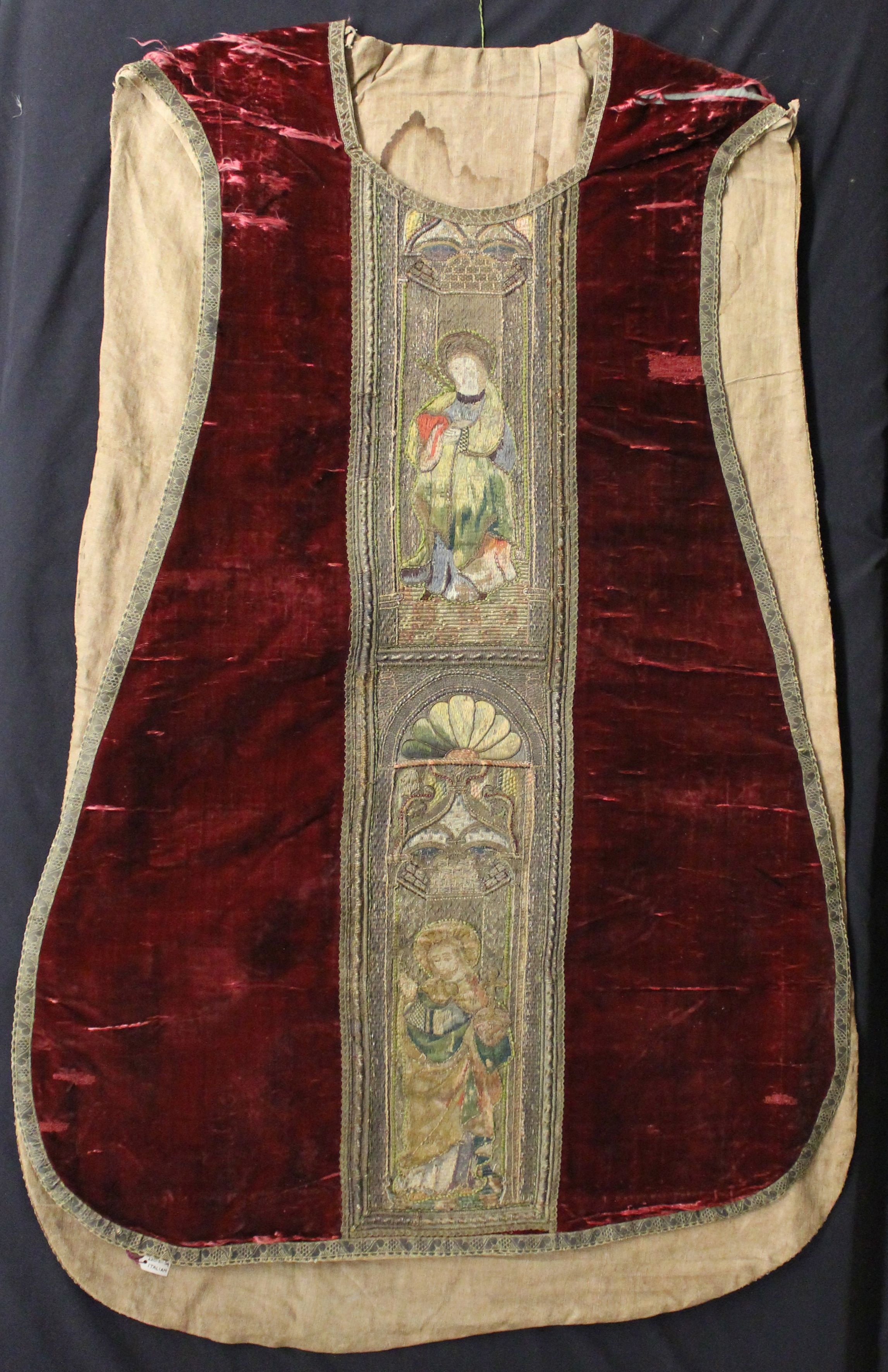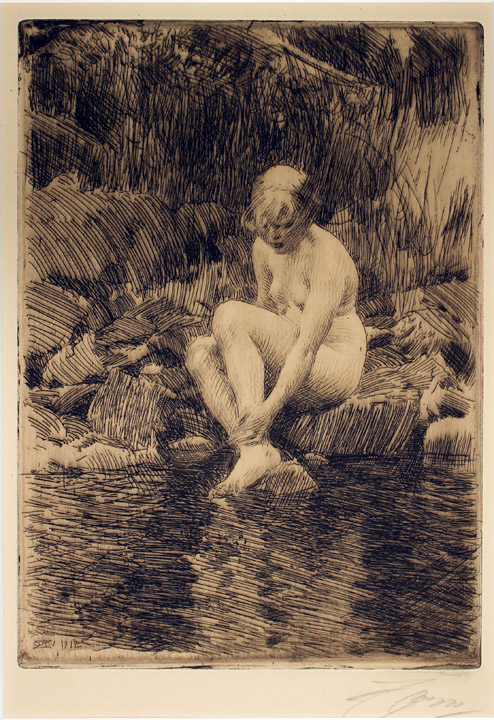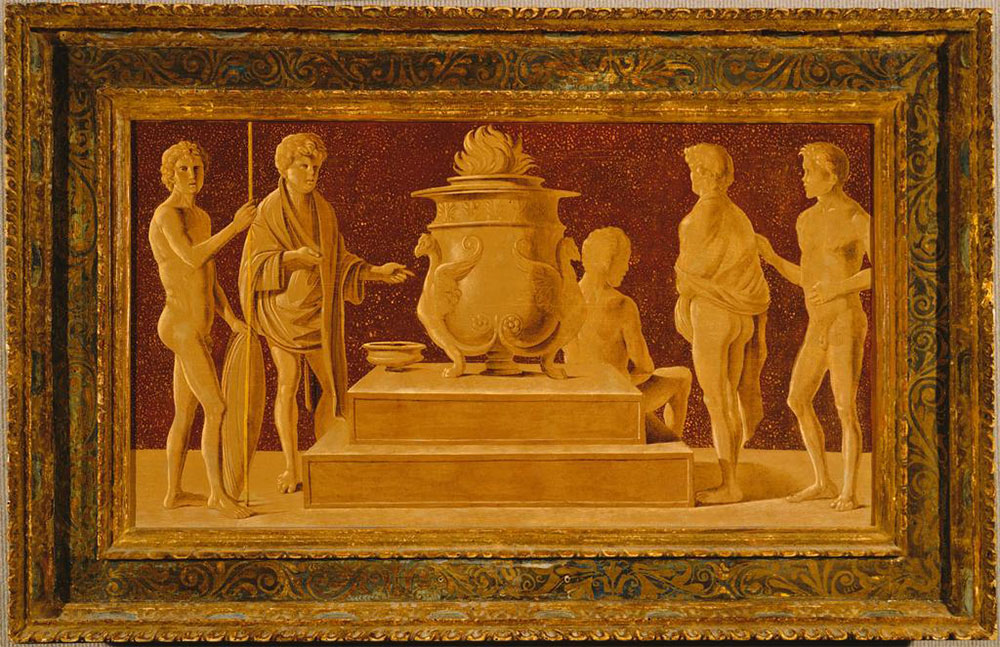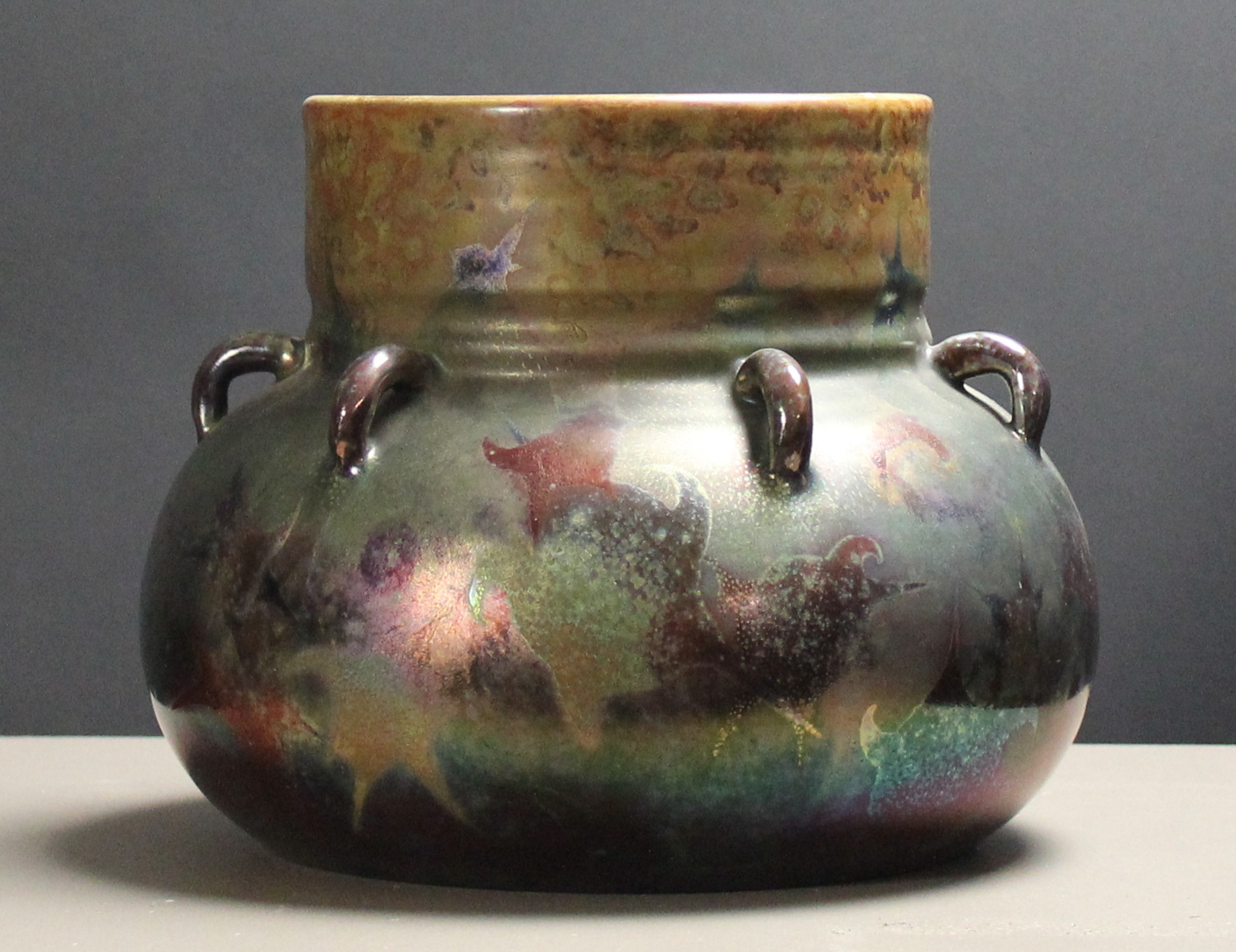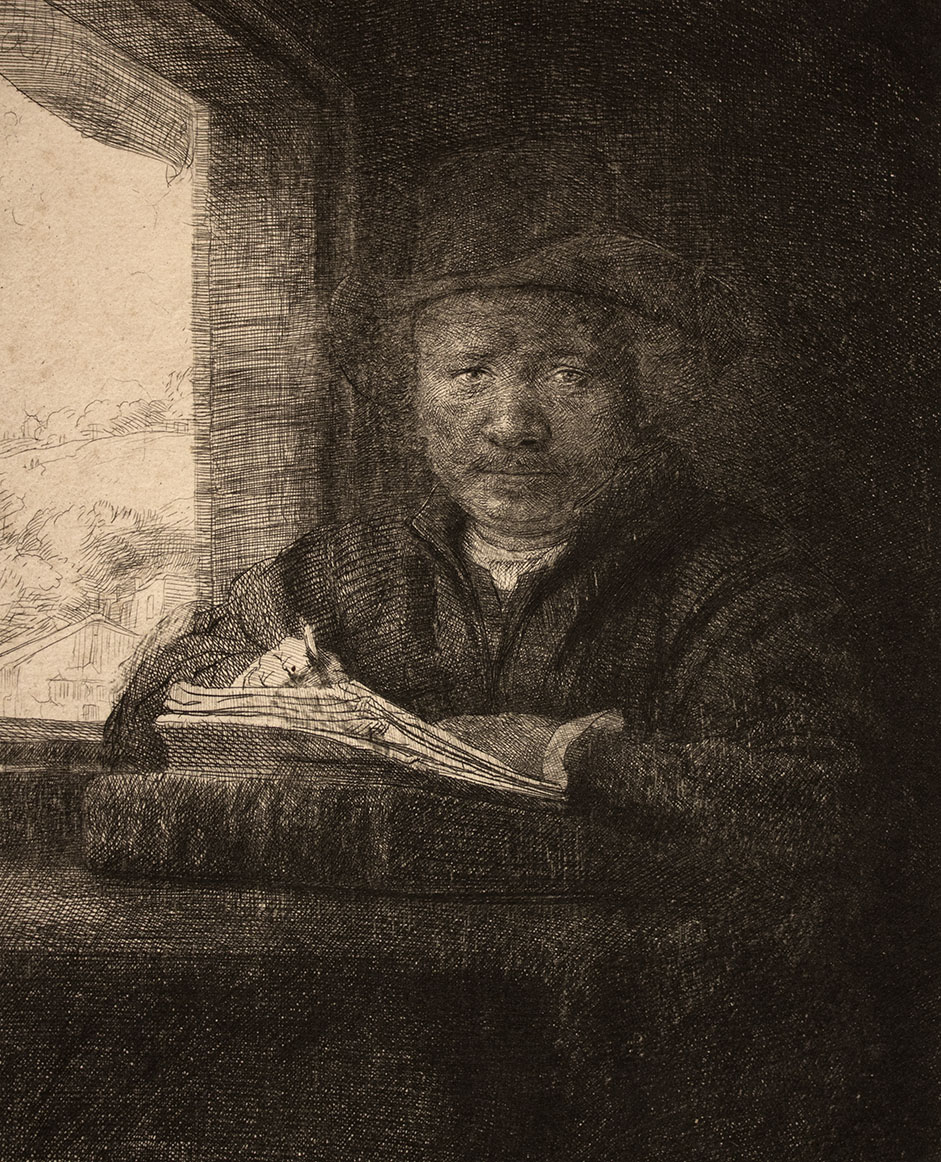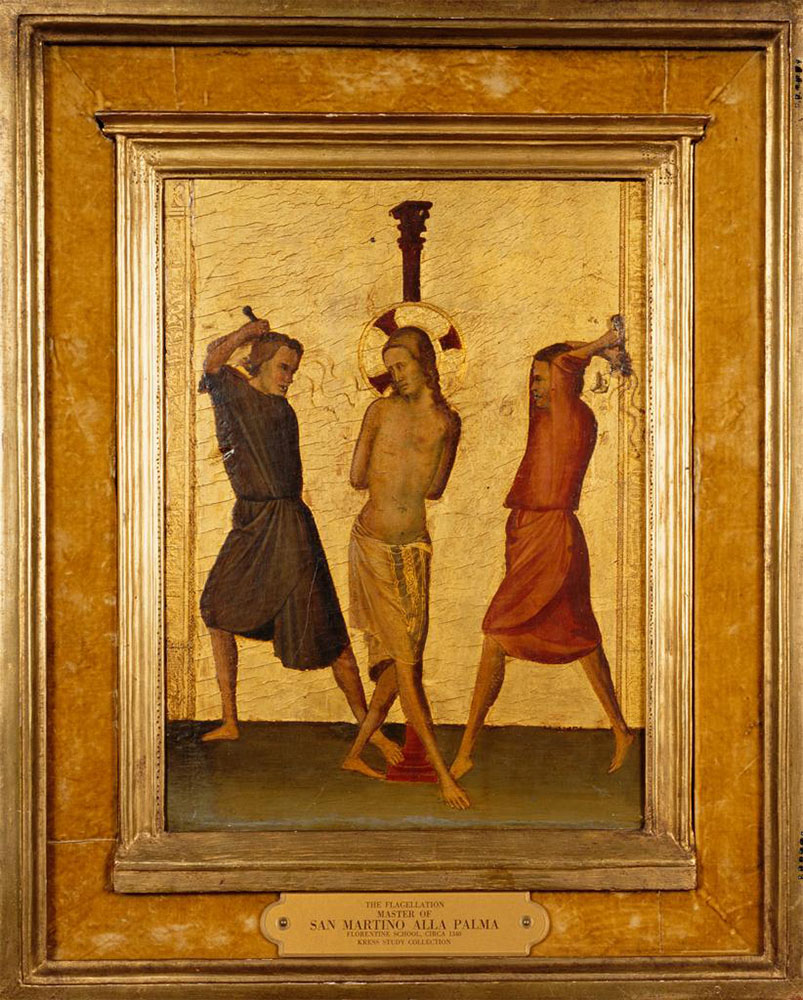The chasuble is the outermost liturgical vestment worn by clergy for the celebration of the Eucharist in Western-tradition Christian Churches that use full vestments, primarily in the Roman Catholic, Anglican, Lutheran, and United Methodist Church (during the Eucharist). In the Eastern Orthodox Churches and in the Eastern Rite Catholic Churches, the equivalent vestment is the phelonion. The chasuble originated [...]
Dagmar
Meghan Doherty2019-05-15T09:05:19-04:00Part of Zorn’s famous nude series, this etching was created two years before the start of World War I. Zorn was a Swedish virtuoso who used different media to create images that invoke emotions in the viewer. The medium used to create this piece is etching. An etching is created when a copper plate is [...]
France at the Furnaces
Meghan Doherty2019-05-15T09:05:19-04:00This drypoint was created during World War I while McBey was stationed in Boulogne, France. During this period France was second only to the United States of America in regards to being an industrialized immigrant society. Immigrant workers contributed to the war effort by supporting the industrial production. Looking at this piece you can see [...]
A Pagan Rite
Berea College2016-07-25T12:56:16-04:00Created in the mid-fifteenth century, this painting epitomizes the art of the Italian Renaissance. Historic records attribute this painting to Giovanni Bellini, one of the greatest Venetian masters of his time. Modern researchers however, have argued against his claim to some later pieces. A Pagan Rite has caused intense debate about over the identity of [...]
Vase
Berea College2019-05-15T09:05:19-04:00This vase, created by Clément Massier, has a rich aubergine color, mixed with gold and green lustre glaze. Directly under the neck, on the shoulder of the vase, are six half-rings, to be used for suspension. Massier was born into a family a ceramicists and, from an early age, took an interest in continuing the [...]
Madonna and Child
Berea College2019-05-15T09:05:19-04:00Tondo or “round” relief casting developed as an independent art form in Florence in the first half of the 15th century. Beginning in the 1420’s, the della Robbia family began working in terra cotta sculpture. The family specialized in images of the Virgin and Child for private devotion, often reproducing them by casting. The Robbia [...]
Rembrandt Drawing at a Window
Berea College2016-07-26T19:39:36-04:00Rembrandt is known for creating nearly one hundred self-portraits. He frequently, minorly altered his appearance in his self-portraits. His facial hair, dress, or expression varies widely throughout the studies. These small changes, for Rembrandt, helped him to increase his self-understanding. Here, he depicts himself at a window drawing at his desk. The shading of etching [...]
Life of the Virgin
Berea College2019-05-15T09:05:19-04:00The Life of the Virgin represents the apex of the German artist Albrecht Dürer’s career. Originally published as a book, the print shown here is a part of a collection of twenty that depict the life of the virgin. Dürer completed this series of prints after a tour of Italy, where he was influenced by [...]
The Flagellation
Berea College2016-06-28T17:34:34-04:00A Florentine painter, known only as the Master of San Martino alla Palma, produced this painting in the mid-fourteenth century. The Flagellation depicts the whipping of Christ by Roman soldiers before his crucifixion. Many Christians practiced self-flagellation, or Mortification of the Flesh, during the era of this painting. Today, it is primarily monastics who practice [...]

